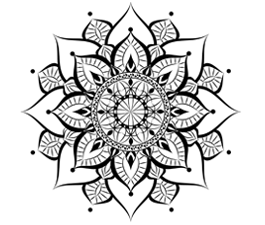This is yet another topic relating to women’s health. In yogic terms, the root lock or MULA Bandha with an empty and full womb is extremely important for pregnant, menstruating and peri/menopausal women. There is not a single pregnancy or menopause class/workshop that I don’t talk about it! And my students know it quite well!
Over the years, pelvic floor muscles would got mentioned only if you were already suffering and visiting your physiotherapist prior or post pregnancy. But these muscles are so complex and incredibly important in woman’s health. And whilst it isn’t the most interesting topic, it is an important one. The pelvic floor often gets ignored – and if you don’t look after it properly, well you will certainly feel it or worse, may have “accidents”, especially in the midlife years. And yoga practice without Mula Bandha will no longer be helpful, on the contrary!
The most common issues during menopause years happen to be not ‘hot flushes’ but overactive bladder or incontinence, atrophic vaginitis and constipation.
In pregnancy, this area is put under pressure during childbirth. However, in certain instances the vaginal prolapse is still possible post delivery.
In certain situations, during puberty and pre-pregnancy, such as frequent sports activities (jumping and running) can put the muscles of perineum under great deal of stress. Also, the other extreme – excessive reinforcement of the abdominal walls in women athletes can sometimes mean a weak pelvic floor muscle. But also, everyday actions such as sneezing and laughing loudly. And one that my mum always told me about – Do not wear tight clothes! E.g. Tight jeans can put pressure on the abdomen and therefore can weaken the pelvic floor (unless of course you regularly practice Mula Bandha)
Therefore, it is even more so important to look after your perineum, pelvic floor or muscles down below – whatever you wish to call them!
Mula Bandha – Vaginal Root Lock for Use with an Empty Womb (i.e. where no menstruation, or baby)
Mula means ‘origin’ or ‘foundation’ or ‘root’ and it is located in the perineum. This practice is to be done with awareness and it will provide toning, energising and release for the muscles of the pelvic walls, abdomen and the lower back too. Can be done whilst kneeling over a cushion or a bolster, or in a Childs Pose with the head resting on the floor/cushion.
- Establish a comfortable full yogic breath (diaphragmatic breath).
- Exhaling, sense the natural drawing of the tummy and vaginal walls towards the cervix (Mula Bandha).
- Inhale here and feel the release.
- Now exhale and draw the vaginal walls towards each other, lifting them up as high as it feels comfortable.
- Inhale and release the lift.
- Exhale and repeat 4 above.
Once you are comfortable with drawing in and up, imagine that there is a lift in the lower belly – follow the lift with your breath and exhalation up towards your naval. Release slowly on an inhale.
This practice may feel strange at first but is to be repeated on a daily basis.
Menstrual Lock
Follow the steps as above, but this time, drawing the vaginal walls in and up on an inhale and letting go and releasing on an exhale.
It is super important to follow the breathing pattern as describedhereas it is more helpful to connect with the downward-flowing energy (Apana) than it is to reverse the flow. [1]
The benefits of Mula Bandha explained herein go to anatomical and physical level rather than the energetic which you may also feel. Once you have an established Mula Bandha practice, use it next time you practice Malasana or during your Suriya Namaskar (Sun Salutation).
[1] Disclaimer and References:
Whilst the breathing instructions can be followed by men, this instruction and article is solely concentrating on women’s pelvis and Mula Bandha.
I am a 500-RYT Special Yoga for Children and Adults with special and additional needs yoga teacher, Pregnancy Yoga and Women’s Yoga teacher registered with Yoga Alliance Professionals UK. This article was written by me based on my research and training. As with any physical practice, please consult with your GP before proceeding with physical exercise or dietary change and in order to make an informed choice. If leakage from the vaginal orifice or prolapse already exists, please consult your GP as these can make matters worse.
“The Female Pelvis” Anatomy & Exercises by Blandine Calais-Germain
“Yoni Shakti” by Uma Dinsmore Tuli
#menopause #mulabandha #rootlock #malasana #prolapse #incontinence #pregnancy #yonishakti #menstruation #pranayama #breathing #femaleanatomy #pregnancyyoga #women’syoga #pelvicfloor #yogaallianceprofessionalsuk



Leave A Comment